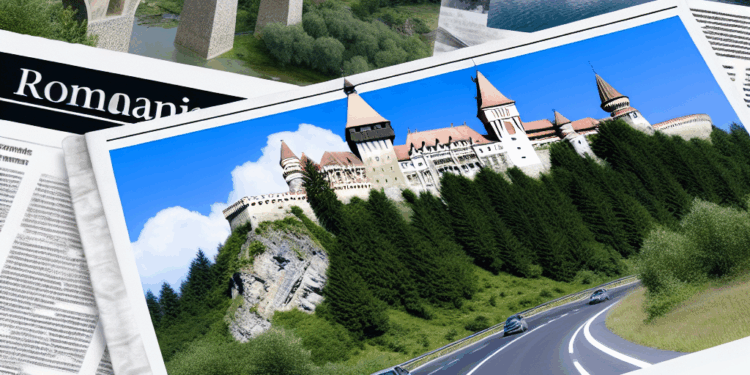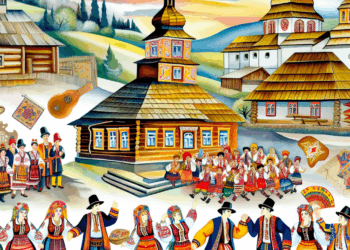Introduction
Bukovina is a territory located in northern Romania and partly in Ukraine that has a rich historical and cultural heritage. Familiar for its multiculturalism, the region is home to various ethnic groups including Romanians, Ukrainians, Jews and Poles. Events in recent years have once again raised questions about its historical heritage, cultural identity and prospects for reunification with Romania. In this article, we will look at current events in Romania related to Bukovina and discuss historical justice and identity issues in this context.
Historical context
Early history of Bukovina
During the Middle Ages, Bukovina was part of different states and cultures. From the 10th century the region was under the influence of the Byzantine Empire, and from the 14th century under the control of the Moldavian Principality. From 1775 it became part of the Austrian Empire, which radically changed its ethnic and cultural map. Under Austrian rule, the region began to actively develop its economy, education and infrastructure. New educational institutions and cultural associations were actively developed here, which contributed to the formation of a unique Bukovinian identity.
In the 20th century
After World War I, Bukovyna gained part of its autonomy in 1918, and then in 1940 it was incorporated into the USSR. In the post-World War II period, the Romanian part of Bukovina remained part of Romania, while the Ukrainian part became part of the Ukrainian SSR. These changes led to major demographic shifts and cultural transformations in the region.
Cultural heritage of Bukovina
Diversity of languages
The linguistic diversity of Bukovina is one of its distinctive features. In the Romanian part of the region, the main language is Romanian, but Ukrainian and Russian can also be found among the population. These languages are woven into the local culture, which enriches the cultural heritage of the region. Recently, there has been a growing interest in preserving minority language and cultural traditions, which is important for creating a more inclusive society.
Traditions and customs
Bukovina is known for its rich traditions, including folk festivals, costumes and crafts. The region’s folklore includes music and dance traditions that have been passed down from generation to generation. The preservation of these customs is important not only for the identity of the local people, but also for the cultural diversity of the whole Romania.
Culinary traditions
The culinary traditions of Bukovina are also diverse and include both Romanian and Ukrainian dishes. One of the most popular dishes is “sarmale” (stuffed cabbage), as well as various types of pies and breads. Local fruits and vegetables contribute to the uniqueness of the local cuisine.
Current events in Romania
Political situation
Romania, like many countries in Europe, has faced various challenges in recent years, including economic problems and migration issues. Political parties continue to debate identity issues, including the impact on minorities associated with regions such as Bukovina.
Issues of historical justice
Contemporary research on the fate of ethnic groups in Bukovina during and after World War II has attracted the attention not only of historians but also of the general public. Many groups are demanding greater accountability and recognition of historical facts related to repression and violence against minorities.
Discussions on reunification
In recent years, questions about the possible reunification of Bukovina with Romania have been raised again in a number of political and cultural circles. This issue provokes vigorous debate and has both supporters and opponents. Many Romanian nationalists believe that historical justice demands the revision of borders and the reunification of all parts of historic Bukovina, while others emphasise the need to respect Ukraine’s current borders and sovereignty.
Prospects for reunification
Support and opportunities
When considering the prospects for reunification, several factors need to be taken into account. First of all, it is important that such initiatives are supported at the level of the political elite in both countries. There are also positive aspects – reviving cultural ties between the two parts of the region and strengthening economic ties can reduce tensions and promote regional co-operation.
Opponents of reunification
On the other hand, questions about reunification have provoked negative reactions among the Ukrainian population, leading to fears of possible escalation of conflicts. Most ethnic Ukrainians in Bukovina view their identity as an integral part of the Ukrainian nation. This creates the need to find compromises in order to respect the rights of all population groups.
Integration through culture
Instead of emphasising territorial reunification, many experts suggest the development of cultural integration and cooperation between Romania and Ukraine. Joint projects in the fields of culture, education and economy can create conditions for a sustainable and harmonious coexistence.
Conclusion
Questions about Bukovinian identity, history and cultural heritage remain relevant and complex. Contemporary events in Romania and Ukraine show that the need for dialogue and understanding is more important than ever. Historical justice, cultural diversity and social change should be the basis for future relations between these two countries.
As we explore the rich history of Bukovina and its multicultural heritage, it is important to remember the need for respect and understanding among all ethnic groups in order to build an integrated and peaceful society in the future.








